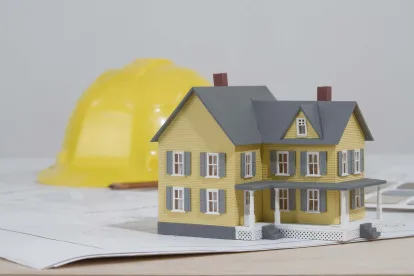On September 27, 2014, Governor Brown signed AB 2222, which amended sections of the State Density Bonus Law (Gov. Code §§ 65915, 65915.5 ["DBL"]). The main purpose of the bill is to require developers to replace all of a property's pre-existing affordable units in order to become eligible for the bonuses, incentives, waivers provided under the DBL. This new requirement makes it essential for multifamily developers to fully investigate the existence of affordable units on the acquisition site before analyzing the benefits that may be derived from use of the DBL.
The Density Bonus Law
The purpose of the DBL, enacted in 1979, is to encourage cities and counties to offer density bonuses, incentives, and waivers to housing developments that include certain percentages of affordable units. As recognized by California courts, the Density Bonus Law rewards a "developer who agrees to build a certain percentage of low-income housing with the opportunity to build more residences than would otherwise be permitted by the applicable local regulations." (Friends of Lagoon Valley v. City of Vacaville, 154 Cal. App. 4th 807, 824 (2007).) By incentivizing developers, the DBL promotes the construction of housing for seniors and low-income families.
Basically, a city or county must grant a density bonus, concessions and incentives, prescribed parking requirements, as well as waivers of development standards upon a developer's request when the developer includes a certain percentage of affordable housing in a housing development project. (A summary of the DBL’s history, procedural and substantive components, and key issues is provided in this article.)
The concern among supporters of AB 2222 was that the DBL sometimes resulted in the overall reduction of affordable units if the prior project contained more affordable units than what was needed to qualify a new housing project under the DBL.
Key Provisions of AB 2222
The most important component of AB 2222 is that it prohibits an applicant from receiving a density bonus (and related incentives and waivers) unless the proposed housing development or condominium project would, at a minimum, maintain the number and proportion of affordable housing units within the proposed development, including affordable dwelling units have been vacated or demolished in the five-year period preceding the application. (See new Gov. Code §§ 65915(c)(3)(A); 65915.5(g).)
AB 2222 also increases the required affordability from 30 years or longer to 55 years or longer for all affordable rental units that qualified an applicant for a density bonus, and requires replacement rental units to be subject to a recorded affordability restriction for at least 55 years. If the units that qualified an applicant for a density bonus are affordable ownership units, as opposed to rental units, they must be subject to an equity sharing model rather than a resale restriction. Under the prior law, only moderate income affordable ownership units were subject to the equity sharing model. (Seenew Gov. Code § 65915(c)(3)(B).)
This new law does not apply to density bonus applications submitted to, or processed by, a local government before January 1, 2015. (See new Gov. Code § 65915(c)(3)(C).)
Practical Considerations
Because AB 2222 affects the ability of certain housing projects to qualify under the DBL, it is essential that developers seeking to invoke the DBL understand the status of the site's existing housing units for the prior several years. If a significant number of affordable units exist (or recently existed) on the site, then the new development must provide at least as many affordable units in order to qualify for a density bonus, even if the project would otherwise have qualified under the DBL's thresholds.
Moreover, developers must recognize that the affordability restrictions will now attach to the property for a longer period of time, which may affect the project's long-term financial return.
Finally, if a multifamily developer is at the early stages of the entitlement process, the developer should be aware of the January 1, 2015 trigger for AB 2222 and act quickly if the provisions of AB 2222 would adversely affect the project's use of the DBL.



 />i
/>i

